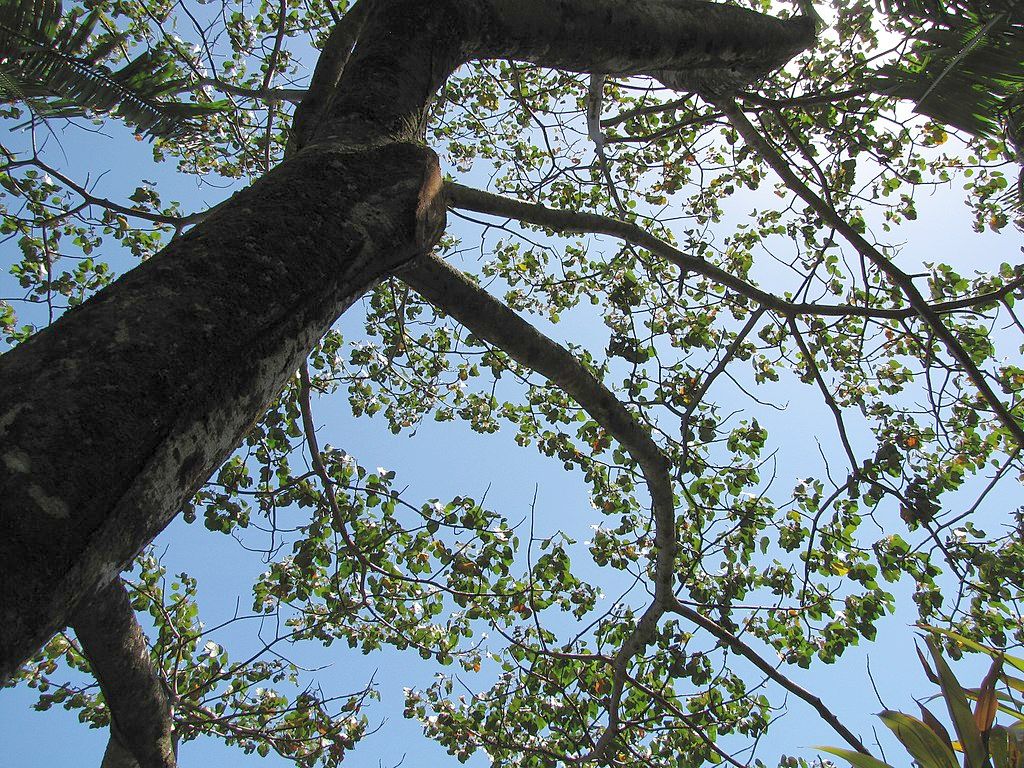
1 March 2023
While traveling in Ecuador last month I saw balsa trees growing in the wild and learned that Ecuador supplies 95% of the world’s commercial balsa wood. The driving force behind these exports is an environmental paradox.
Balsa (Ochroma pyramidale) is a pioneer tree of tropical forest clearings, native to Central and South America. It is so fast growing that it can grow 6-9 feet a year and reach full height of about 100 feet in only 10-15 years. The trees are short-lived, lasting only 30-40 years.
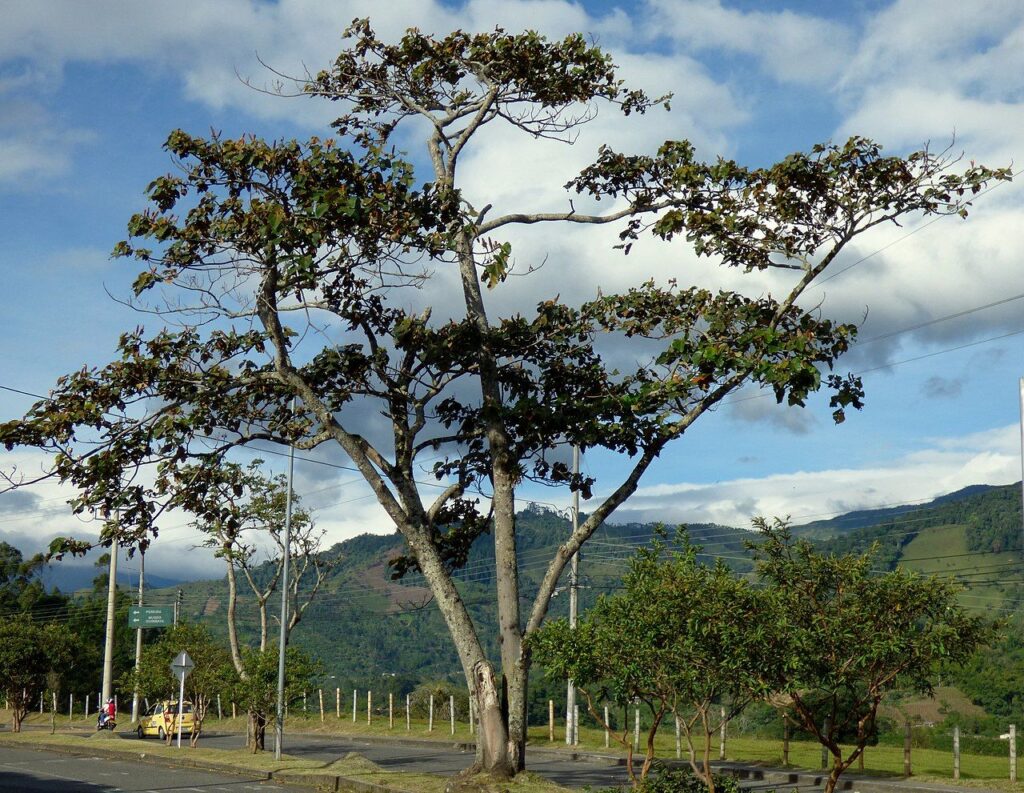
Inside the living wood the cells are large, thin-walled and full of water so that the tree stands upright. When cut and kiln dried the wood is very lightweight and sturdy.
In the wild balsa trees are widely spaced at about one tree per acre (2-3/hectare) but to meet commercial demand balsa is grown in plantations containing 400 trees/acre (1000/hectare). Plantation trees are cut at 6-10 years old because much of the wood in older trees — the core and outer layers — is commercially useless.
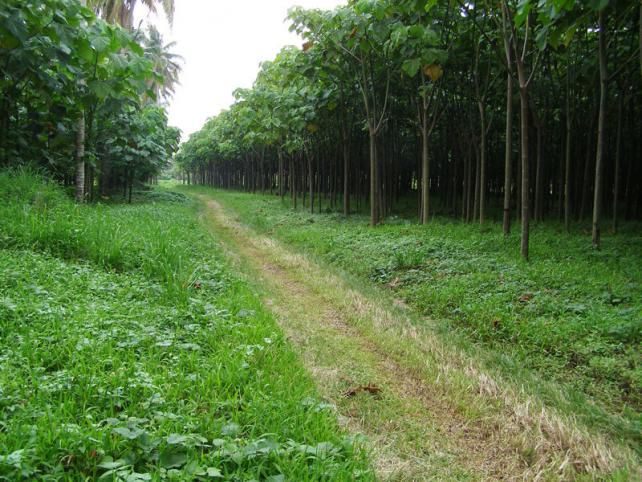
Most of us are familiar with balsa wood in toys and woodworking.
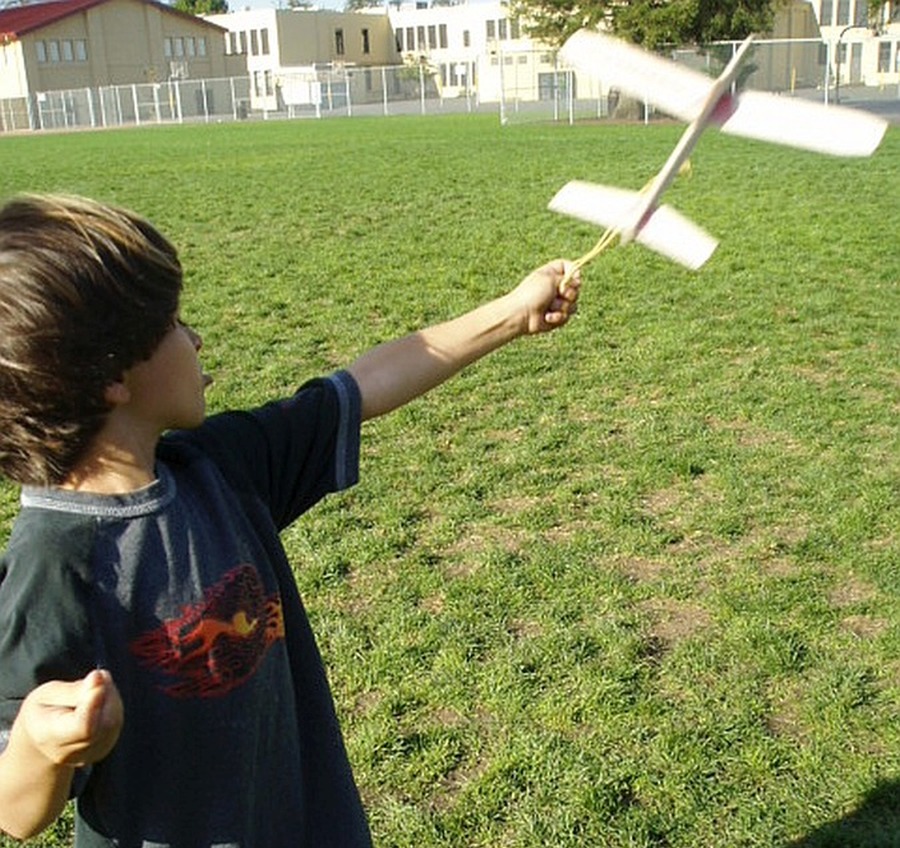
This balsa wood bridge won a physics contest in 2006. It weighs only 60.95 grams (0.134 pounds) yet it supported 14.51 kg (31.989 pounds).

Ecuadorans made ocean-going rafts of balsa logs long before the Spanish arrived in the 1500s and it is still used for rafts today. (Balsa is the Spanish word for raft.)
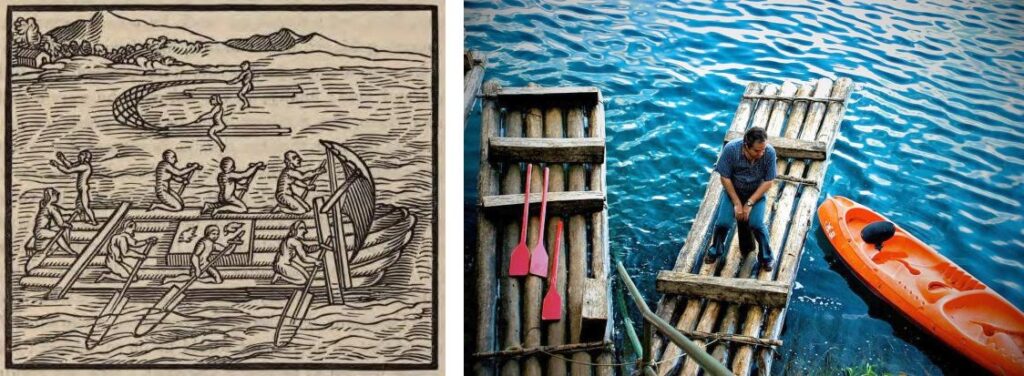
But none of these uses are the driving force behind increased Ecuadoran balsa exports.
Balsa wood is a component in wind turbine blades. According to GE which manufactures wind turbine blades at Castellon, “Workers make the blades from fiberglass fabric and balsa wood. Then, the blade is covered with an airtight foil and the team installs a network of tubes that pumps in and distributes the resin that will hold it together.”
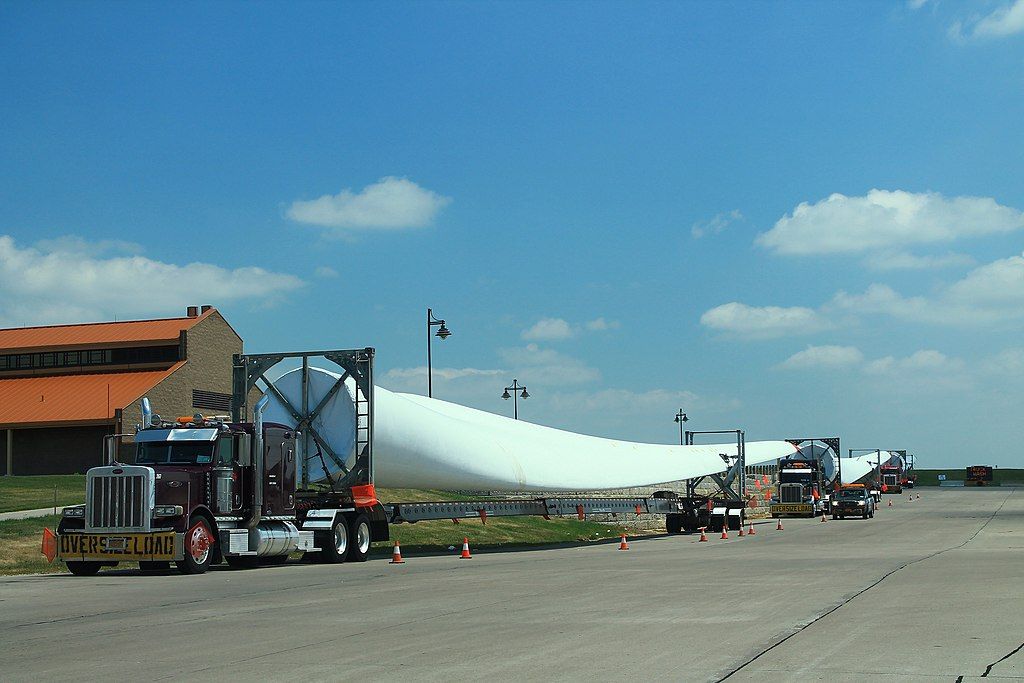
In the past decade when the Chinese government eliminated taxes for the alternative energy industry, it prompted a boom in wind turbine production. The majority of Ecuador’s balsa exports go to China.
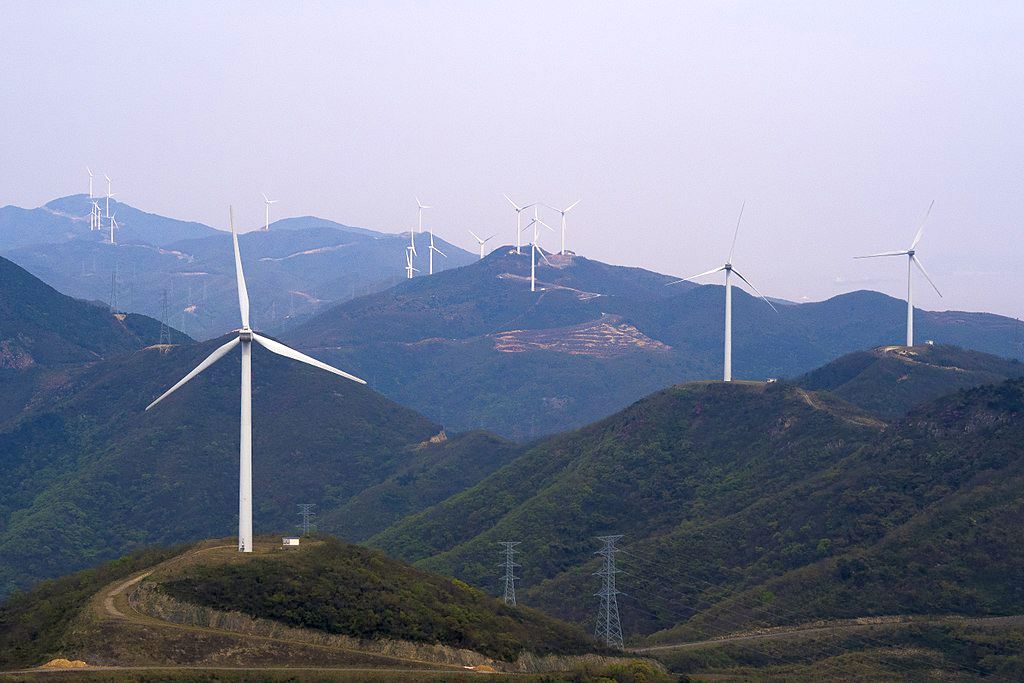
Plantations provide 60% of Ecuador’s balsa wood but the remaining 40% is coming from wild trees in the rainforest. Using satellite images and on-the-ground followup Mongabay and Global Forest Watch have documented deforestation in Ecuador, especially east of the Andes in the Amazon watershed. According to Mongabay:
The Pastaza River Basin is one of the areas most affected by the balsa industry. There, the Pastaza, Bobonaza, Curaray, Villano, Copataza and other rivers are used as logging access routes, with satellite imagery showing their banks increasingly pockmarked by deforestation. Sources tell Mongabay Latam that the logging has been so intense that balsa has been completely removed from some areas.
…[And now] loggers are starting to harvest other timber species in areas that have been denuded of balsa.
“The same loggers and traders that one year ago arrived from [the cities of] Quevedo, Esmeraldas or Guayaquil are now arriving to look at what else is there,” Páez said.
“There is an ongoing process of deforestation of valuable tree species in Indigenous territories” with no monitoring by the authorities, she added.
— Mongabay, August 2021: Indigenous Amazonian communities bear the burden of Ecuador’s balsa boom
The deforestation shows up as pink dots in Global Forest Watch’s map, below left. Are these places where birders go? The eBird map of Ecuador hotspots at right is red at sites where birders reported more than 500 species. There seems to be overlap south and east of Quito.
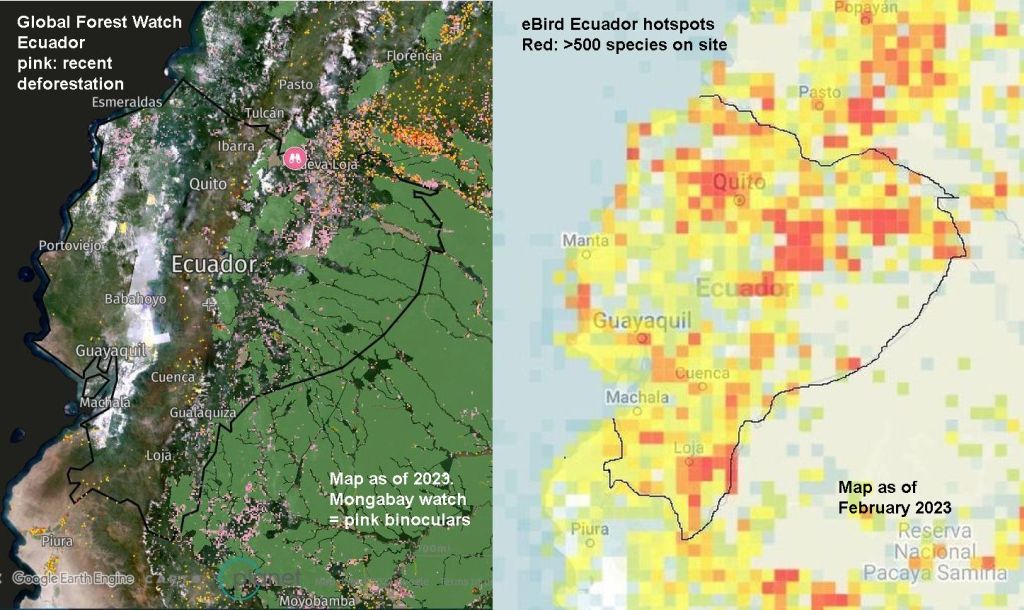
The environmental paradox of balsa wood is this: To create renewable energy quickly, we are cutting down the rainforest.
Read more in this article from Mongabay and this from World Rainforest Movement.
NOTE about the eBird map: eBird maps show where birders have found birds and reported them on eBird. The blank spots on the Ecuador map do not indicate an absence of birds but instead an absence of birders or an absence of Internet access.
(photo and map credits are in each caption; click on the captions to see the originals)
Excellent blog entry, Kate! Never heard of this issue before today.
I saw this tree in Costa Rica in January. It was flowering and birds were feeding on the nectar including Montezuma and Chestnut-headed Oropendolas, White-necked Jacobin and Violet-headed Hummingbirds. The flowers were large and showy. It is an important wildlife tree. Did you see Cecropia Trees on your trip? They are another important tree in tropical rain forests.
I saw a few Cecropia trees in Ecuador but there were far more on my trip to Costa Rica six years ago. Cecropia were densely packed compared to balsa trees in the wild.
Great article on Balsa. thanks.
Can you suggest a source for Balsa Wood Tree Seeds?